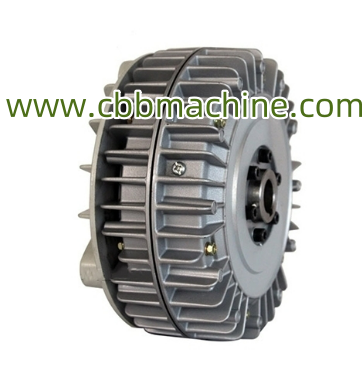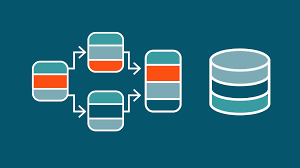Decoding the Buyer Journey with Organic SEO Tactics

There’s a secret to how customers buy things online—and it’s not just about showing up on Google.
We’re not just talking keywords here. We’re talking strategy—deliberate, layered, often invisible but always intentional. At the heart of it lies organic SEO: the quiet, calculated backbone of digital behavior. And if you’ve ever wondered why someone bounces off your website or what makes them click ‘Buy’ on your competitor’s page, then you’re asking the right questions.
This blog isn’t fluff. It’s a field report. We’re diving headfirst into the real buyer journey—mapped, decoded, and translated into SEO tactics that work. Buckle up. We're lifting the lid.
Awareness: The Moment Curiosity Strikes
Every journey begins somewhere—and online, that "somewhere" is often a search bar.
But not every user who stumbles upon your content is ready to purchase. In fact, most aren’t. They’re curious. Confused. Problem-aware, not solution-aware. This is where organic SEO steps into its first role: educator.
What’s really happening here?
The buyer is identifying a need—consciously or subconsciously. Maybe their roof’s leaking. Maybe their app isn’t converting. Maybe they’ve just realized they’re not showing up on Google. Whatever it is, they need answers, not ads.
What works in this phase:
-
Blog posts that answer “why” and “what” questions
(Think: Why Is My Website Not Ranking?) -
Long-tail keywords that mirror how real people talk
-
Snappy headlines that answer a question before it’s even asked
This stage isn’t about sales. It’s about connection.
The goal? To appear helpful, credible, and worth remembering.
Because if you can own awareness, you’ve already planted a flag in the buyer’s mind.
Consideration: The Hunt for the Best Option
Welcome to the research phase—arguably the most crowded stretch of the buyer journey. This is where comparison begins, and trust is on trial.
Buyers are asking: Who understands my problem best?
They’re reading listicles. Watching explainer videos. Downloading eBooks. They’re deep in tabs, toggling between your site and five others.
This is where organic SEO needs to go beyond content—it needs to structure the experience.
What shifts here:
-
Content becomes layered: Guides, case studies, FAQs, and testimonials all start playing their part.
-
Internal linking matters: It’s how users and search engines move from question to solution inside your site.
-
On-page optimization becomes psychological: Clarity, readability, and authority signals like stats or credentials affect not just rankings—but retention.
You’re not trying to scream louder than competitors.
You’re trying to resonate deeper.
Because consideration isn’t won by clicks—it’s won by clarity.
Decision: The Tipping Point
Now comes the make-or-break moment.
Buyers have done their homework. They're leaning in. And the smallest nudge can swing the final decision.
Here’s the uncomfortable truth:
You don’t win here just because your SEO got them this far.
You win because your SEO didn’t get in the way.
At this phase, your site must:
-
Load lightning fast
(A one-second delay here kills conversions) -
Offer crystal-clear CTAs
(Start Free Trial should never feel buried) -
Match search intent perfectly
(If they searched for local SEO audit, don’t serve them a webinar on international strategy)
This is where technical SEO, UX, and intent alignment collide.
Organic traffic is no longer the finish line—it’s just the bridge to conversion clarity.
Post-Purchase: The Forgotten Goldmine
Most SEO conversations stop at the sale. That’s a mistake.
Because post-purchase behavior is data-rich, highly engaged, and ripe for optimization.
Your buyer now becomes:
-
A reviewer
-
A referral source
-
A return customer
-
A case study
-
A keyword magnet
What SEO gets activated here:
-
User-generated content (UGC): Google loves authentic, dynamic text
-
Email nurturing linked with content hubs: Keep feeding your blog ecosystem
-
Rich snippets and schema for testimonials: Enhance visibility and credibility
SEO isn’t just traffic.
It’s trust. And trust compounds over time—especially after the buy.
Mapping Keywords to Intent: The Real Science
There’s a dirty little secret in the SEO world: Not all traffic is good traffic.
High impressions? Meaningless without conversion.
Low bounce rate? Not helpful if users aren’t qualified.
The truth is, the wrong keyword attracts the wrong buyer.
So if your keyword strategy doesn’t mirror the buyer journey, you’re burning budget and time.
Here’s how the best teams align intent to action:
-
Informational phase: “How to fix [problem]”, “What is [service]”
-
Navigational phase: “Best [service] providers in [city]”, “[brand] reviews”
-
Transactional phase: “Get quote for [service]”, “Book demo with [agency]”
SEO isn’t just about what you rank for—it’s about who you’re inviting to the table.
Content Strategy Isn’t Just Blog Posts. It’s Buyer Psychology.
Let’s drop the illusion: SEO content isn’t about ticking boxes.
It’s about engineering belief.
Every section. Every sentence. Every link.
Each is a micro-step in the user’s emotional journey from doubt to decision.
What this really means:
-
Tone matters more than word count
-
Headings aren’t just labels—they’re navigation
-
“Scannable” isn’t lazy writing—it’s user empathy
The most effective SEO content understands user fatigue.
It delivers relief—not just relevance.
Because at every stage of the journey, the buyer is secretly asking: “Can I trust this?”
Your content—optimized and authentic—is your only answer.
The Role of Technical SEO in Supporting the Journey
This is the unsung hero of the buyer experience. And no, it’s not glamorous.
But if your content is the conversation, your technical SEO is the room it’s happening in.
Think:
-
Mobile responsiveness
-
Clean architecture
-
Schema markup
-
HTTPS security
-
Crawlability and indexing protocols
If your site isn’t technically sound, it’s like hosting a Michelin-star dinner in a collapsing house.
The buyer will leave—no matter how good the content.
And search engines will agree.
The Future: Journey-Based SEO Strategy
As AI shapes behavior and search evolves, the buyer journey is getting less linear and more chaotic.
People start on TikTok. They search on YouTube. They check Google Reviews. Then maybe, maybe, they land on your site.
So how does SEO adapt?
The answer is integration.
Organic SEO isn’t a channel. It’s an ecosystem.
It supports:
-
Voice search
-
Featured snippets
-
Zero-click searches
-
Social search intent
And most importantly, it tracks real user behavior, not vanity metrics.
The future of SEO will no longer be about traffic volume—it will be about qualified momentum.
What to Fix If Your Journey Is Broken
If bounce rates are high or conversions low, the diagnosis lies in the journey. Here’s a real checklist:
-
Are users landing on the right page for their intent?
-
Are your pages optimized for questions—not just keywords?
-
Are your CTAs timely, visible, and value-driven?
-
Is your mobile UX smooth, or frustrating?
-
Are your rankings winning traffic but not action?
Don’t guess.
Audit every stage. Interview customers. Study heatmaps.
Remember: The funnel isn’t flat.
And SEO isn’t set-and-forget. It’s iterative storytelling.
Conclusion: Strategy Over Stunts
Organic SEO is not a marketing trick. It’s the architecture of trust.
When done right, it doesn’t just rank—it reassures. It educates. It converts.
It doesn’t follow the buyer—it guides them. Quietly, ethically, predictably.
For businesses seeking to compete without shouting, dominate without spending blindly, and connect without compromise—organic SEO is not just the answer. It’s the blueprint.
And in this evolving landscape, organic SEO specialists aren’t simply optimizers.
They’re the cartographers of modern commerce.



